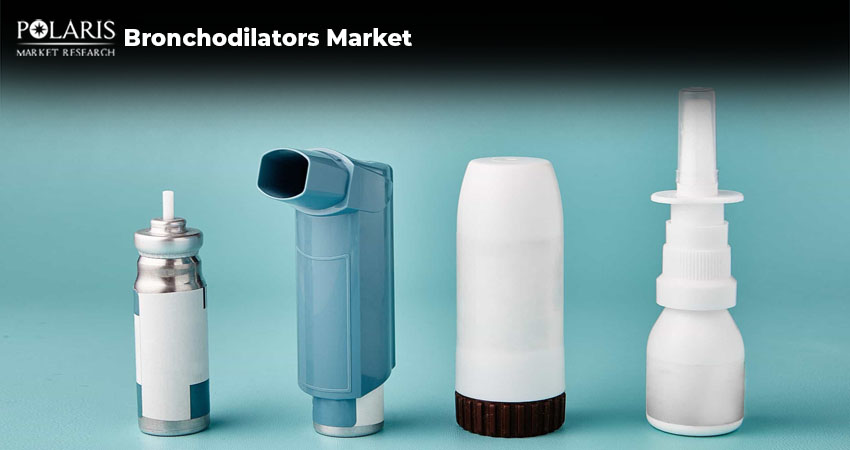How Bronchodilators Are Transforming Respiratory Care?

Breathing is one of the most essential functions of the body. Yet, it can often feel like a daily challenge for people with respiratory disorders. Conditions such as asthma, chronic obstructive pulmonary disease (COPD), and bronchitis are becoming increasingly common. As such, effective treatments have become more important than ever.
One of the key treatments in modern respiratory care is the use of bronchodilators. As medications, bronchodilators work by relaxing the muscles surrounding the airways, helping patients breathe more freely. This blog post covers the fundamentals of bronchodilators, explaining their mechanism of action and types. We also shed light on the key trends shaping the bronchodilator market landscape. Stick with us!
What Are Bronchodilators?
Bronchodilators are medications that open up the airways by relaxing the surrounding muscles. Relaxed muscles make it easier to breathe. Bronchodilators are commonly prescribed for respiratory conditions, including asthma, chronic obstructive pulmonary disease (COPD), and bronchitis. These medications are typically taken using inhalers. However, they can also be given in tablet or liquid form.
Based on their use, bronchodilators can be categorized into two main groups. These are short-acting bronchodilators and long-acting bronchodilators. Short-acting bronchodilators work quickly to provide rapid relief during sudden breathing difficulties. Long-acting bronchodilators, on the other hand, work over time to keep airways open and manage symptoms on a daily basis.
Market Stats
The bronchodilator market was estimated to be worth USD 23.64 billion in 2024. By the end of 2034, it is expected to reach a valuation of USD 32.94 billion. It is predicted to showcase a CAGR of 3.4% during the forecast period.
Mechanism of Action of Bronchodilators
Bronchodilators work through different mechanisms depending on the drug class:
Beta-2 Agonist Bronchodilators: These drugs activate beta-2 receptors in the lungs. The receptor activation relaxes the airway muscles, allowing the air passages to widen. They are among the most widely used bronchodilators.
Anticholinergic Bronchodilators: Anticholinergic bronchodilators block the action of acetylcholine, which is a neurotransmitter that triggers airway tightening. The prevention of this signal results in the airways remaining more open, and breathing becomes easier.
Methylxanthine Bronchodilators: These are a less commonly used drug class today. Methylxanthines reduce inflammation in the airways and relax the smooth muscles. They are typically used when other treatments are less effective or not suitable.
Benefits of Bronchodilators
Bronchodilators offer several advantages for patients living with asthma, COPD, and other respiratory conditions. These include:
Immediate Relief: Short-acting bronchodilators (SABAs) act within minutes. Their use provides quick relief during sudden breathing difficulties or asthma attacks.
Improved Lung Function: Long-acting beta agonists (LABAs) help keep the airways open over time. Their use helps patients breathe more comfortably on a daily basis.
Better Exercise Tolerance: Taking bronchodilators helps reduce breathlessness. Patients, especially those with COPD, can stay more active and maintain mobility.
Fewer Hospital Visits: Bronchodilators reduce the risk of severe flare-ups when used correctly. This reduces the need for emergency care or hospitalization.
Emerging Trends Shaping Market Landscape
Here’s a look at the key trends shaping the bronchodilator market landscape:
Rising Prevalence of Respiratory Diseases
The global burden of respiratory disorders is rising due to pollution and workplace-related conditions. Asthma and COPD, in particular, are becoming more widespread. This situation has led to increased demand for bronchodilators. Older adults are more susceptible to respiratory diseases and often need more support from bronchodilators. The COVID-19 pandemic also has an indirect impact on market demand. This is because the virus weakened the lungs and increased susceptibility to respiratory infections.
Advancements in Drug Delivery
There have been significant advancements in the drug delivery of bronchodilators. These advancements primarily focus on enhancing patient adherence and device usability. They include the introduction of innovative inhalation devices such as metered-dose inhalers and dry powder inhalers. The integration of electronic components and data collection systems for monitoring patient usage and adherence is leading to more accurate dosing and improved disease management.
Increased Emphasis on Personalized Treatments
The shift towards personalized and hyper-personalized medicine is influencing the bronchodilator market landscape. Treatments are now being tailored to meet the individual characteristics of each patient. The market is also witnessing the development of combination therapies. The ability of personalized medicine to simplify treatment plans makes it easier for patients to follow up and leads to better outcomes.
Advancements in Digital Health Solutions
There has been an increase in the adoption of smart inhalers and digital monitoring systems in the bronchodilators market. These digital healthcare solutions aim to improve medication management and patient outcomes. Technological advancements and the growing prevalence of chronic conditions largely fuel the shift towards digital health solutions.
What’s Next for Bronchodilators?
In the coming years, bronchodilators are expected to improve in a few key ways:
Longer-Lasting Medications: Researchers are exploring the development of drugs that can last for over 24 hours. These longer-lasting medications will require patients to take them only once a day instead of multiple times.
Biologic Bronchodilators: Some new treatments target the specific causes of airway inflammation. These can be used alongside traditional bronchodilators for better results.
Smarter Inhalers: Inhalers are now incorporating artificial intelligence (AI) to help track symptoms and predict asthma attacks. These inhalers can automatically adjust the dose if needed.
Environmentally Safer Inhalers: Growing environmental concerns have prompted pharmaceutical companies to adopt ecologically friendly propellants that are better for the environment.
Conclusion
Bronchodilators continue to play a key role in the management of respiratory conditions. They offer both rapid symptom relief and long-term control. The rising prevalence of respiratory conditions is reshaping the evolution of the bronchodilator market. Manufacturers are focusing on smarter drug delivery and more personalized care. For everyone involved in the market, it’s essential to stay up-to-date with changes to cater to patient needs and remain competitive.

